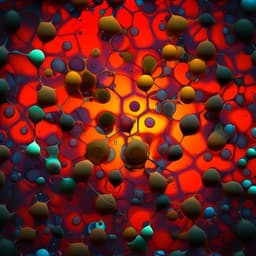
Engineering and Technology
Greatly enhanced tunneling electroresistance in ferroelectric tunnel junctions with a double barrier design
W. Xiao, X. Zheng, et al.
This groundbreaking study by Wei Xiao and colleagues unveils a double barrier design for ferroelectric tunnel junctions, achieving a remarkable tunneling electroresistance ratio of 2.210 × 10⁶. With the capability to independently control polarization across barriers, this innovation presents exciting possibilities for multi-state memory technology.
~3 min • Beginner • English
Related Publications
Explore these studies to deepen your understanding of the subject.







